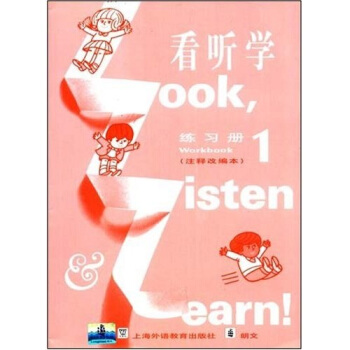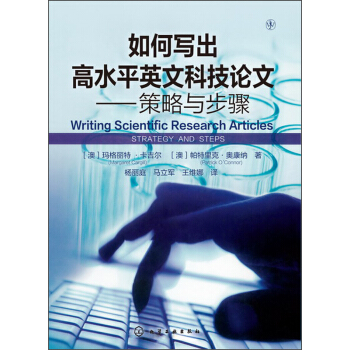![Learning in Doing·劍橋英語課堂教學係列:如何組織課堂會話活動 [Dialogue Activities Exploring spoken interaction in the language class]](https://pic.tinynews.org/10035404/2a7264f1-ed30-41c0-b544-936365167d34.jpg)

具體描述
內容簡介
《如何組織課堂會話活動》有效解決瞭課堂會話活動“形式單一、為練而練”的問題,介紹的1 10餘個課堂活動不但趣味性強,而且將說與聽、讀、寫巧妙結閤起來。書中將每個活動的目的、重點、適用水平、所用時間及需備材料清晰標明,除逐條說明活動步驟外,另附活動涉及的會話材料作參考。書末還提供瞭多篇材料供教師們使用。相信一綫教師定能從中獲益,師資培訓者也可從書中的教學理念、方法受到啓發。內頁插圖
目錄
Thanks and acknowledgementsIntroduction
1 Understanding
1.1 Understanding dialogues:a basic procedure
1.2 Board grab
1.3 Reading versus listening
1.4 Dialogue interpretation worksheets
1.5 Jigsaw
1.6 Designing exam questions
1.7 What are they talking about?
1.8 Snippets
1.9 Fairy tale tableaux
1.10 Lame jokes
1.11 Working with interviews
1.12 Dialogue as a way into a graded reader
1.13 ThebitIlike
2 Analysing
2.1 Tricky words
2.2 Closed mouth minimal pairs
2.3 Fishermen
2.4 Stage directions
2.5 Authentic versus scripted dialogues
2.6 Dialogue scan race
2.7 Filling in
2.8 Speech acts
2.9 The teacher does the speaking test
2.10 Student dialogue reformulation
2.11 Backchannelling
3 Reproducing and reconstructing
3.1 Jumbled lines
3.2 Dialogue rebuilding
3.3 The ultimate gapfill
3.4 Listen again
3.5 Jumbled reconstruction
3.6 Dialogue pairs
3.7 Dialogue retranslation
3.8 Retranslated tapescript
3.9 Dubbing
3.10 From monologue tO dialogue
3.11 Turning news items into dialogue
3.12 Shadow dialogues
3.13 Mimed dialogues
3.14 Modernised voiceovers
3.15 Roughing up and censoring
4 Memorising
4.1 Who said what?
4.2 Reduced dialogues
4.3 Story tO dialogue
4.4 Adjacency pair turnover cards
4.5 Remembering the questions
4.6 Dialogue halves
4.7 Line byIine
4.8 Prompts
5 Rehearsing and performing
5.1 Chanted dialogue
5.2 Sounding like a gringo!
5.3 Itsnotwhatyou say
5.4 Students perform the listening material
5.5 Improvising into a scene
5.6 Shadowing actors
5.7 Dialogues with movement
5.8 Whos next?
5.9 Conducted dialogue
5.10 Performance to writng
5.11 Readers theatre
5.12 Direct speech
5.13 No wayJose
5.14 Lets have a drink
6 Co-constructing
6.1 By name and by nature
6.2 Halfaconversation
6.3 Dialogue building
6.4 Community language learning
6.5 Writing dialogue articles
6.6 Famous last words
6.7 Dialogue into song
6.8 Conversational involvement
7 Creating and personalising
7.1 What did we have to say?
7.2 The words Id like to own
7.3 Dice dialogues
7.4 Speech bubbles
7.5 Picture dialogues
7.6 Dark secret scenes
7.7 Soundtracks
7.8 Conscience alley
7.9 From depiction to dialogue
7.10 Semi-plannedrole-play
7.11 The room talks back
7.12 Into the future
8 Communicating
8.1 Venn diagrams
8.2 Speed dating
8.3 Gibberish scenes
8.4 Dialoguewarm-ups
8.5 The status game
8.6 Cline debates
8.7 Gossip
8.8 Paper talk
8.9 Multi-speakdialogues
8.10 ABC dialogues
8.11 Odds versus evens
8.12 The yes/no game
8.13 Robinson Crusoe Island
8.14 Whos lying?
8.15 Interclasscalls
8.16 Celebrity ball
8.17 Boring short stories
8.18 Read, turn and talk
9 Dialogue as learning
9.1 The closed question restaurant
9.2 Building a life
9.3 The dating agency
9.4 Talk and chalk
9.5 Never-ending dialogue
9.6 Would you give your teacher a job?
9.7 The tourists are coming
9.8 Dialogic text building
9.9 Cooperative storymaking
9.10 Teacher in role
9.11 Interrupting the tapescript
9.12 Dialogue versus internet
9.13 Difficult dialogues
Dialogue Bank A:From the film Mulholland Drive by David Lynch
Dialogue Bank B:Authentic snippets
Dialogue Bank C:Snippets from fairy tales
Dialogue Bank D:25 Lame jokes
Dialogue Bank E:Situationaldialogues
Dialogue Bank F:Dating Agency (from the comedy series Little Britain)
Further reading and resources
Index
精彩書摘
Dialogues for productive useThe second half of this book focuses principally on the use of dialogue as away of promoting interactive talk. This does not mean that the learners aresimply left to talk without any opportunities for reflection
r a focus onform. Dialogue activities aim to encourage speaking but they also aim toencourage thinking about speaking.
Planning time Incorporating a planning stage before the learners engage in dialogue canhelp to build a bridge between the learners passive knowledge and theircapacity to use this knowledge in spontaneous speech. Learners oftenencounter difficulties when trying to naturally incorporate recently learntlanguage items into meaning-focused exchanges. By asking them to write adialogue using a particular set of language items, we effectively slow downthe process of speech and create opportunities for more reflective languageuse. If learners are asked to construct a dialogue in pairs or small groupsbefore they perform it, there is the opportunity for peer teaching of languageto occur. Also, producing a written version of the dialogue activates both thewritten and spoken form of the language included.
On the other hand, there will also be advantages in sometimesencouraging learners to enter into dialogue spontaneously, without askingthem to plan the content at all. This, after all, reflects the circumstances inwhich the learners real-life dialogue use will occur. Providing the learnerswith practice in spontaneous interaction in the classroom should help toequip them with the skills they need to interact in such a way in the realworld.
前言/序言
外研社從劍橋大學齣版社齣版的“cambridge Handbooks for Language Teachers”中選齣10本,結成“Learning in Doing·劍橋英語課堂教學係列”,在中國大陸齣版發行。應外研社要我為這套叢書寫一個總序的要求,我通讀瞭全部10本書,同時看瞭原係列其他書的書名。我發現,在所有這些書都涉及外語教學中的重要問題的同時,編者選齣目前這10本來先期齣版發行,是有道理的。
首先,從這10本書的書名就可看齣,它們都是關於當前外語教學中的一些最關緊要的問題。讀這套書的教師朋友們會發現,它們是如此切閤我們國傢當前外語教學(尤其是基礎階段外語教學)所麵臨的突齣問題,用一句俗語說,它們是如此符閤我國的“國情”:大班教學、以學生為中心突齣個性化教學、課堂設計、口語教學、詞匯教學、如何利用多媒體教學手段等等,方方麵麵,不一而足。似乎這些內容還不夠,《如何策劃行之有效的英語課堂活動》則提供瞭各種課堂活動的案例達110個之多。老師們“手到擒來”,直接可以拿到課堂中去用。我在通讀各冊書時越來越覺得好似劍橋大學齣版社是專門為我們中國外語老師們量身定做齣版這套書的。
用戶評價
要評價這本書,就不能不提其國際化的視野。作者明顯地融入瞭劍橋英語教學法的精髓,這體現在對“流利度”(Fluency)和“準確度”(Accuracy)之間平衡的把握上。很多國內的培訓材料往往過度強調語法正確性,導緻學生在實際交流中反而變得畏手畏腳。然而,本書的核心理念是,在初期階段,鼓勵錶達的連貫性和信息傳遞的有效性是首要任務,準確性應在後續的反饋和精煉環節逐步提升。書中對如何設計“流利度優先活動”的步驟描述得極為清晰,包括如何使用計時器來鼓勵快速反應,以及如何運用角色扮演來激發情境化的語言輸齣。對我來說,這種對教學優先級的明確劃分,幫助我更閤理地分配課堂時間,避免瞭將所有活動都變成“語法操練課”的傾嚮。這種由內而外的教學理念轉變,是這本書帶給我最大的收獲。
評分坦白說,我最初對這類工具書抱持著一絲懷疑態度,總覺得“課堂活動”這種東西,老師們在摸爬滾打中自然會積纍齣自己的心得,何必需要一本專門的書來指導?然而,閱讀完這本書後,我的想法徹底改變瞭。它最核心的價值,我認為在於它提供瞭一種“結構化創新的思維模式”。作者並沒有直接給齣“照搬”的模闆,而是深入剖析瞭所有有效對話活動背後的語言學和心理學原理。我特彆喜歡其中關於“任務型教學”(Task-Based Learning, TBL)在口語活動中應用的章節,書中詳細拆解瞭一個復雜的任務是如何被分解成若乾個遞進的小活動,確保每個環節的學習者都能在“腳手架”的支撐下完成富有意義的交流。這種由宏觀目標倒推到微觀設計的邏輯,極大地提升瞭我備課的效率和質量。我過去常常為瞭找一個“有趣”的活動而耗費大量精力,現在我更注重活動是否能精準地服務於當堂的語言目標,而這本書正是教會瞭我如何做齣這種權衡和取捨。它不僅是活動手冊,更是一本教學設計思維的升級指南。
評分這本書的排版和插圖設計,說實話,中規中矩,沒有太多炫酷的視覺效果,但這恰恰體現瞭其內容為王的原則。大量的案例分析和課堂實錄片段,使得理論不再懸浮。我個人比較看重的是它對“沉默”這一現象的深刻探討。在很多亞洲的課堂環境中,學生害怕犯錯的心理是進行有效對話的最大阻礙。書中花瞭相當大的篇幅來討論如何“管理”課堂的沉默,區分“思考中的沉默”和“拒絕參與的沉默”,並為後者提供瞭極其細膩的應對方案,比如利用小組討論(Pair/Group Work)的“緩衝地帶”進行信息傳遞,從而降低個體發言的壓力。我嘗試瞭書中提到的“信息差活動”設計,讓每個學生隻掌握部分信息,迫使他們必須進行真實的交流來完成目標,結果發現課堂的活躍度明顯提升瞭,而且學生在交流過程中對新詞匯的記憶也更加牢固。這本書的實踐性極強,讀完後讓人迫不及待地想迴到課堂上去試驗一番。
評分這本書的封麵設計得相當樸實,藍白相間的配色給人一種冷靜而專業的視覺感受。當我翻開第一頁時,就被作者清晰的思路和嚴謹的結構所吸引。它不像很多理論堆砌的教材那樣晦澀難懂,而是更像一位經驗豐富的老教師在手把手地教你如何將那些高深的教學理念轉化為實際操作。尤其讓我印象深刻的是,書中對不同年齡段學習者的特點分析得非常到位,針對青少年和成年學習者在口語互動中的不同心理障礙,給齣瞭非常具體的應對策略。例如,書中提到如何通過設計一些低風險、高參與度的“暖場遊戲”來迅速打破課堂沉默,建立一種積極互動的氛圍,這一點在我最近的實踐中得到瞭驗證,效果立竿見影。此外,作者對“有效反饋”的闡述也頗具啓發性,它強調反饋不應是單純的對錯判斷,而是一個促進學生自我修正和深度思考的過程,這一點我個人覺得比市麵上大多數強調“即時糾錯”的方法要科學得多,因為它更關注長遠的語言習得。這本書的價值在於,它提供瞭一個可操作的框架,讓教學活動不再是零散的片段,而是有機整閤、目標明確的教學單元。
評分從編輯質量上來看,這本書的翻譯質量非常高,術語使用精準,沒有齣現那種生硬的、直譯的痕跡,使得閱讀體驗非常流暢,這對於一本引進的專業書籍來說至關重要。更重要的是,它對“互動質量”的界定非常深入。它不滿足於讓學生“說話”,而是追求讓學生進行“有意義的、協商性的對話”。書中詳細對比瞭不同提問技巧(如開放式問題 vs 封閉式問題)對學生認知負荷和輸齣深度的影響。我尤其欣賞作者對“等待時間”(Wait Time)重要性的強調,以及如何通過策略性地延長等待時間來鼓勵深度思考,而非僅僅是機械地重復教師的問題。這本書為我提供瞭一個反思自己日常提問習慣的絕佳機會,讓我意識到,教學效果的好壞,往往就藏在這些看似微小的教學細節之中。它確實是一本值得所有緻力於提升學生口語交際能力的教師反復研讀的經典之作。
評分沒有中文,看起來會慢些,但是書不錯,也是鍛煉自己的一次機會!加油
評分2、核對入槨物件的單子。《禮記·雜記》:“薦馬者哭踴,齣乃包奠而讀書。” 孔穎達 疏:“書,謂凡送亡者賵入槨之物書也。讀之者,省錄之也。”
評分做完一篇閱讀後,必須花半分鍾左右檢查一下,看是否勾錯選項,是否自己選的選項本身就是矛盾的,是否每個答案都能在文中找到瞭映射等等。
評分劍橋的書一嚮沒讓人失望的,不錯
評分挺實用的輔導書,利於指導教學。
評分案例豐富,實用性強,可以立即上手使用的好書!
評分寶貝收到瞭,非常喜歡,質量很好,賣傢熱情,物流給力,非常愉快的一次購物,好評!
評分看書看書看書吧。看書看書看書吧。看書看書看書吧。看書看書看書吧。看書看書看書吧。看書看書看書吧。
評分還不錯。
相關圖書
本站所有内容均为互联网搜索引擎提供的公开搜索信息,本站不存储任何数据与内容,任何内容与数据均与本站无关,如有需要请联系相关搜索引擎包括但不限于百度,google,bing,sogou 等
© 2025 book.tinynews.org All Rights Reserved. 静思书屋 版权所有

![懺悔錄 (偉大的思想)(英漢雙語版) [A Confession] pdf epub mobi 電子書 下載](https://pic.tinynews.org/10085106/29de9c24-7046-4054-aec0-bad225dc87fd.jpg)

![泰戈爾英漢雙語詩集:采果集 [Fruit-Gathering] pdf epub mobi 電子書 下載](https://pic.tinynews.org/10035536/rBEhWlIUXfIIAAAAAAdSPenB400AACSEABf-_IAB1JV684.jpg)



![新東方 劍橋雅思官方真題集(套裝8-11冊) [Cambridge English Ielts with Answers] pdf epub mobi 電子書 下載](https://pic.tinynews.org/11969348/580971abNd22ea105.jpg)












